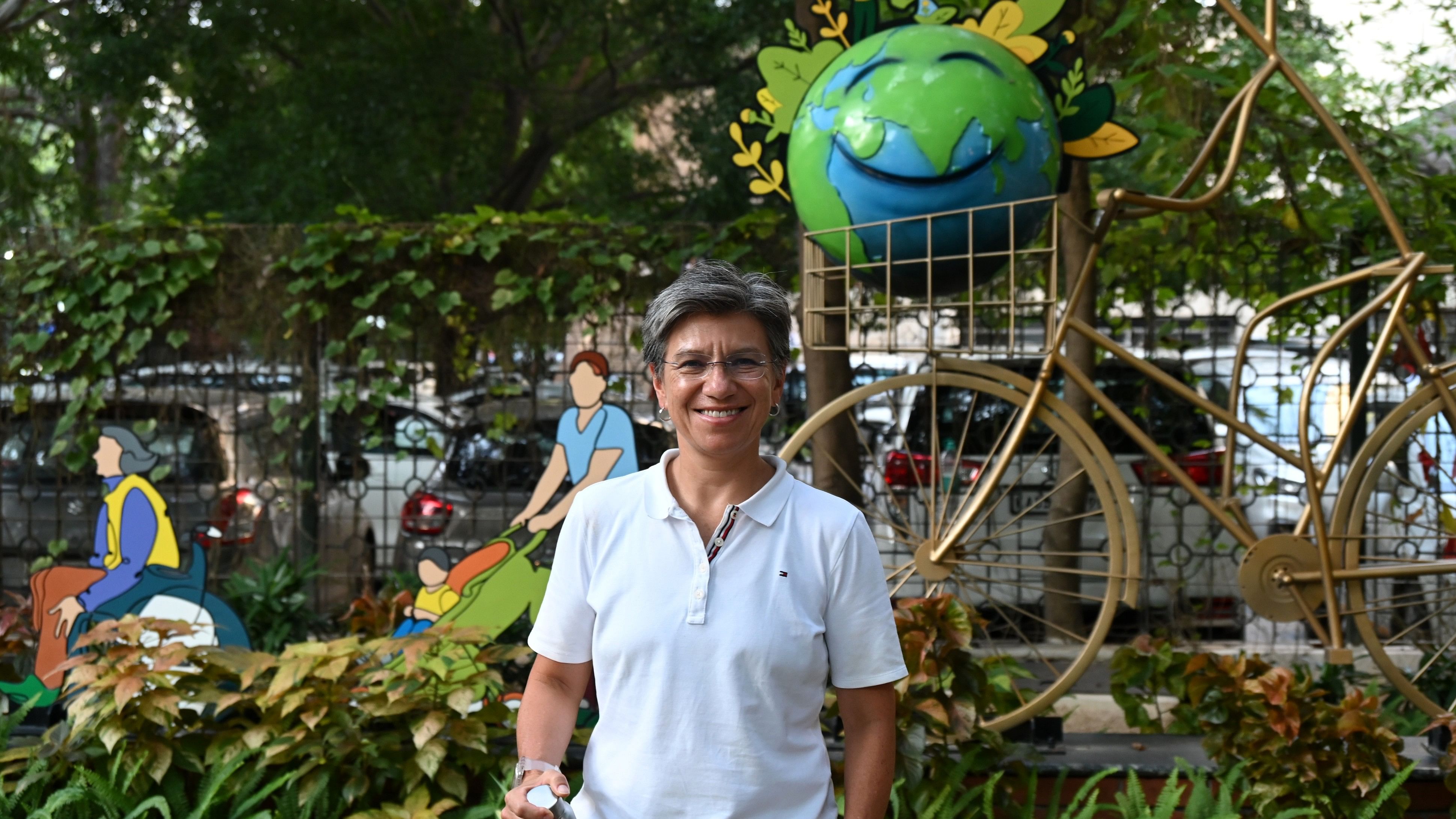
Claudia Nayibe López Hernández, former mayor of Bogotá, Colombia.
Credit: DH PHOTO/BK Janardhan
As the mayor of Bogotá from 2020 to 2024, Claudia Nayibe López Hernández focused on making the Colombian capital's public transport systems sustainable and inclusive.
Thirty years ago, Bogotá's traffic was as bad or worse than Bengaluru's because it was "car-centric". But in the last three decades, Bogotá has been transformed. It now has 114 km of the bus rapid transit (BRT) system and 600 km of permanent bike paths. It's rapidly electrifying its bus fleet and connecting different modes of transport. In a city of 11 million, six million people travel by BRT and feeder buses or cycle. Currently an advisor at the World Resources Institute (WRI), Hernández is in Bengaluru, a city she loves for its vibrancy, energy and tech talent. She is also aware of Bengaluru's struggles to create an efficient and sustainable public transport system. She believes Bengaluru, comparable in size to Bogotá, can learn from the Latin American city and create the cheapest, shortest, fastest and safest multi-modal transport system. DH sat down with her for a free-wheeling chat on Bengaluru, Bogotá and their public transport systems.
Edited excerpts:
How important is it to connect different modes of transport?
Connected public transportation is about connecting people from home to work, from home to study and from care to leisure. Disconnected infrastructure is expensive and useless.
Many say what do you suggest: BRT or metro? I say, it's not or but and. People want to go from origin to destination in the cheapest, fastest and safest way. So you need to understand the different reasons and types of trips that people do. Summer-care trips are shorter. Others are occasional trips for a couple of days, or there are recurrent trips for jobs in manufacturing industries. Design the interconnection of the multi models so that you can do it in the cheapest, shortest, fastest, safest way.
What do you think of Bangalore's public transportation system?
The problem was the same in Bogotá that we didn't plan properly. Twenty years ago, we should have built a multi-modal public transportation system. But 20 years of history is nothing for a city. It might be something for a person, but for a city is nothing.
Bengaluru is the IT tech pride of India. You have the best scientific data-driven people in this city. You should be able to use all that technology to measure in real time all the types of trees, every single movement and every single mode of transportation that Bengaluru has. It may take you six months or a year. Once you have that, you can plan a multi-modal transportation. Let's define by technical criteria which modes will carry most people interconnected and cheapest. And if you take one or two years of proper planning, then you can scale up enormously.
There are lessons that we have already in Latin America. Forget about Europe or the United States which is not relevant as an example for us. Bengaluru has 14 million people, Bogotá is an 11-million people region. I mean we have different challenges and similarities in the metropolitan region. The second thing is all these infrastructures you're creating changes the value of land and encourages developers to join employment, housing and public infrastructure and transportation.
Do you think it is possible and practical to build a feasible multi-modal system in a city like Bengaluru, which is growing by leaps and bounds in all directions?
It's absolutely possible. I can tell you Bogotá was 30 years ago as Bengaluru is today or worse. It was a very tough decision to use dedicated lanes for buses. You have the money and you can build a subway (underground) metro or express dedicated lanes and preserve the surface area for pedestrians for cleanest modes of transportation, for BRT or other modes of public transportation that could use electric vehicles.
Can flyovers or tunnel roads solve the traffic problem?
In the private car-driven infrastructure, the more people you carry, the more congested you become. And that's like a rule of thumb. If you are going to build a bigger road, that bigger road will have bigger congestion in a couple of years because private car-driven transportation works like that, it will congest whatever infrastructure you build for it. Based on what we know in the Global South, flyovers or big avenues taking all the surface space is really like an urban crime because you will invest a lot of money, a lot of effort, and you will have the worse congestion in a decade.